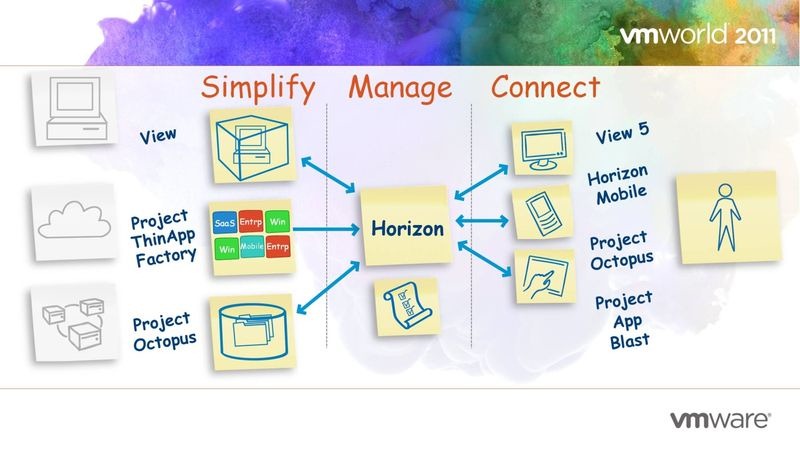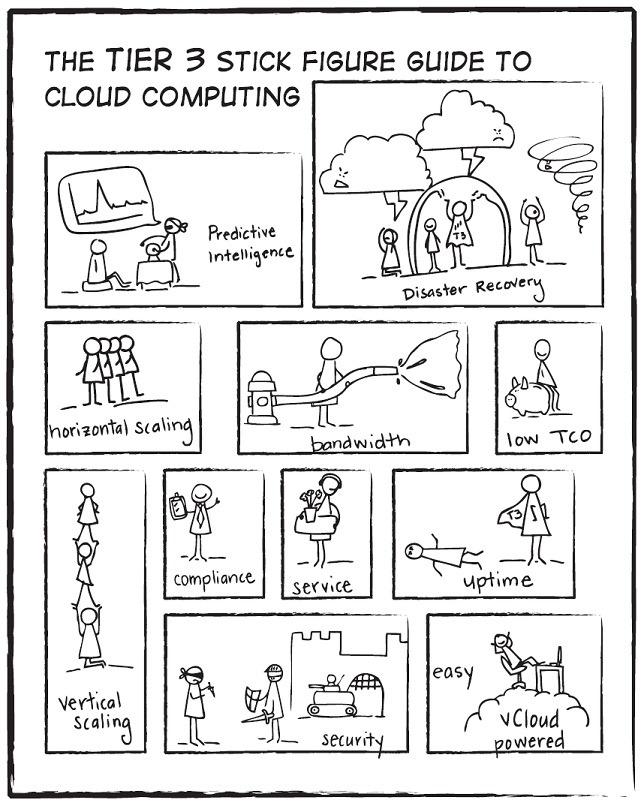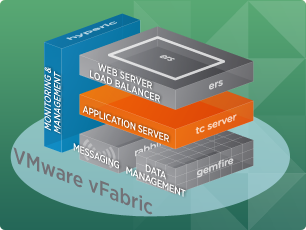With more than 20,000 participants and 400 exhibitors, VMWorld is the place to be for people interested in virtualization, cloud, and new trends in IT, as driven by fast changes in infrastructure. Of course, with $3000 per head, it is also one of the most expensive conferences out there. I, along with VMware’s Thirumalesh, presented on migrating to cloud-ready platforms from Weblogic:
First, the general trends

It is clear VMware spawned one of the biggest eco-systems in the world.
To start with, all VMware has is the ability to virtualize a machine. That is, it can run a program on a machine so that the machine can appear to be multiple machines or VM’s. It means, on one server or PC, we can run multiple OS’s.
Next up, they provide the ability to take an application and OS and bundle it as a thin VM (just enough OS to make that app run). That means, all the issues of porting to different OS’s and incompatibilities of OS’s disappear.
Next, they moved along the direction of managing the VM’s. They can manage capacity leveling, load balancing, and sharing across the VM’s. They can manage a cluster of host machines running several VM’s. For instance, they can migrate one VM from one server to another server. The potential management possibilities are enormous. Your server going down? Just move your VM to another server and be done with it. Or, there is a hurricane coming your way? Move your VM to a server in a different country.
And, of course, if you have the capability of capturing, restarting, replicating the computer, then you can do lot of other interesting magic: horizontal scaling, recovery, and backups. Of course, lot of these capabilities need support at various levels: computing, storage, and networking.
The traditional way of viewing the virtual server market: Compute, Storage, and Networking is maturing progressively. There are lot companies that are solving some problem in the management, provisioning, operations, and decision making in the virtual infrastructure area.
One interesting trend is virtualizing at the device level. VMware is working on technologies to push a virtual device onto android or iPad (it is bit more convoluted – it is actually an interface) so that people can own their own devices and yet access company resources with a clear wall between personal and company. If a person leaves the company, a central admin can de-provision without having to be there physically.
 On one hand, the
trend of managing the personal devices for the company is exciting. Still, I
have mixed feelings about it (I think it is encroaching on the capabilities of
the web – why are we going down this path anyway?). Watch out this space for a
detailed blog about my perspective on that.
On one hand, the
trend of managing the personal devices for the company is exciting. Still, I
have mixed feelings about it (I think it is encroaching on the capabilities of
the web – why are we going down this path anyway?). Watch out this space for a
detailed blog about my perspective on that.
Next, journey to the cloud

As interesting as the the infrastructure is (and lucrative too), VMware is spending lot of time and money on the cloud platforms. For them, it is a part of the strategy to get the organizations move to the cloud. They invested heavily in SpringSource platform under vfabric. They are also investing in other platforms to make sure that they run better in VMware’s cloud. In addition, they are looking at other platforms as well as long as it fits into their cloud vision.

One of the big issues with their platform vision is this: they are not leaders in the platform business. They are not, historically, a player in providing any software stack. Other vendors (IBM, Microsoft, Oracle etc) or other cloud players (SFDC, google) are bigger at this platform business. So, VMware is making a big push towards this platform.
The first impediment towards this platform is that there are lot of applications that companies have developed in standard J2EE platform. These technologies are complex, with too many levers to operate and optimize. It means, for VMware, they are an obstacle to successful movement to cloud. Yes, they can be virtualized, but without many benefits that VMware can offer.
If you are wondering about the benefits, consider one example: VMware’s hypervisor (the application that runs all the VMs) as you know allocated memory to the VM’s. Now if it can know how the machines are using the memory, it can do some dynamic adjustment so that it can manage more VM’s for the same memory. It may be that different machines are peaking at different times. Now, with regular VM’s VMware runs a program at OS level to help with this smoothing out of the demand for memory. If it java program, how can it do that? Enter EM4J – elastic memory for java. It runs only on tcServer, a part of vFabric.
All this means is this: VMware likes to see transition to the vFabric from other platforms so that they can win the cloud war.
This is a short note – soon, I will be writing about my impressions of micro foundry.